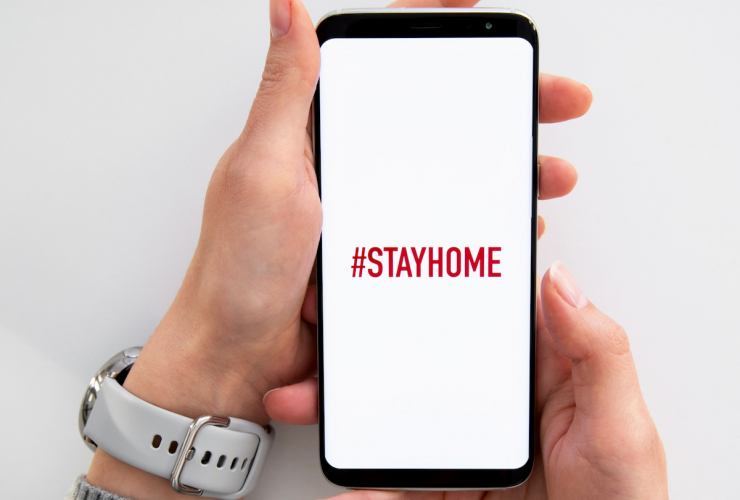If you’re a resident of Ontario, you’ve probably found yourself wondering lately how we came to be in the midst of another stay-at-home order, with admissions to ICUs higher than ever during this pandemic — especially after being encouraged to visit restaurant patios and book hair appointments just a few weeks ago.
The truth is, two months ago, Ontario’s science advisory table presented concerning data to elected leaders and the public that predicted a steep increase in COVID-19 cases if public health measures were not strengthened, leaving one reporter in the audience to ask out loud whether we were headed for a disaster.
So, if public health experts have known for some time that Ontario was headed towards a tragic uptick in illness, hospitalizations and deaths, surely the leaders in charge of the province’s pandemic response received this information, too. If a lack of knowledge or awareness aren’t to blame for the current situation, why then were elected leaders so willing to ignore that knowledge presented to them by experts?
Risk perceptions differ between experts and non-expert laypeople
There are many reasons why experts and non-expert laypeople seem to have different perceptions around risks and which decisions should be made to address them. Firstly, without expertise and experience in a particular field, laypeople must rely on quick mental shortcuts and instincts to process information to make decisions, rather than drawing on knowledge or technical expertise. This can make laypeople susceptible to certain cognitive biases, or errors in thinking, that may impact how they perceive a risk compared to individuals with expertise on that risk.
A well-known example is the optimism bias, whereby an individual tends to overestimate the probability they’ll experience a positive outcome, which can be particularly problematic among overconfident non-experts who may possess a failure to know and recognize the limits of their knowledge.
Another cognitive bias, the illusion of control, occurs when individuals overestimate the level of control they have over a situation as well as the extent to which their skills can increase the likelihood of a positive outcome. It’s been shown that people who hold power over decision-making tend to be especially susceptible to this bias and incorrectly assume they have more control over the outcomes of their decisions than they do.
When those decision-makers also perceive some level of disagreement between experts during a risk event with a considerable level of uncertainty (e.g. pandemic modelling), then their inability to fully grasp the consequences of the various plausible scenarios can fuel some pretty “irrational” decision-making. So if non-expert leaders and decision-makers don’t cope particularly well with managing uncertain events, what are they doing in charge of managing a province’s response to a quickly evolving risk like a virus?
Priorities for risk mitigation and management differ
Experts have trained for years in their area of professional expertise precisely to undertake the type of complex problem-solving that non-expert laypeople aren’t particularly knowledgeable in. Experts and non-experts also have very different priorities and goals for mitigating the impacts of a risk on society and how best to manage the risk.
Over the course of this pandemic, health experts have made it clear their primary goals are to prevent deaths and illnesses attributable to COVID-19 and best maintain health-care system capacity. Their approach to managing the risks COVID-19 poses to health have centred around analyzing the best available evidence and providing independent and transparent advice to decision-makers. In contrast, the actions taken (or not taken) by those in charge of Ontario’s pandemic response have appeared to prioritize short-term economic activity over public health goals and have resulted in a risk management strategy that has ranged from inadequate to downright irrational (remember when we banned outdoor playgrounds for a day?).
What now?
When it comes to planning pandemic responses going forward, provincial leaders need to either start making evidence-based decisions or let the experts driven by evidence make more decisions. The flip-flopping seen in places like Ontario and Alberta — from telling people it is fine to visit patios and shopping malls, to scolding them for doing so, to then expressing shock at the subsequent increase in COVID-19 case counts that was predicted — can’t keep happening. The inconsistent messaging about which public health measures are required to keep people safe needs to stop. Unfortunately, with ongoing vaccine supply issues in the short term, planning an exact date for a return to normal may be more difficult in Canada than in our vaccine-rich neighbour to the south, where tentative plans for Fourth of July celebrations have begun.
But there are still opportunities to take meaningful actions to reduce the burden of death and disease from COVID-19 in Ontario and elsewhere in Canada if we continue to adhere to strict public health measures for a few more weeks to come. It will take instituting some of the policies experts have long called for — which leaders here in Ontario have so far avoided making any concrete decisions around — such as paid sick leave for vulnerable workers and deploying vaccines where they are most needed. In Ontario, it’s time for our leaders to learn from past failures and make another very important decision during this pandemic: are they ready to listen to the experts?
Cathy Slavik is a PhD candidate in Health Geography at McMaster University. She is a recipient of the Joseph-Armand Bombardier Canada Graduate Scholarship for her research project on health risk communication and cancer risk perceptions.






Comments